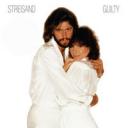 Crouching Tiger, Hidden Dragon is a martial arts film for those who hate martial arts films.
Crouching Tiger, Hidden Dragon is a martial arts film for those who hate martial arts films.
The movie tells the tale of two venerable warriors (Chow Yun Fat and Michelle Yeoh) whose fates are tied to a mysterious young woman (Zhang Ziyi). Together the three become involved in the theft of a legendary sword, the Green Destiny, and the search for an infamous thief and killer known as Jade Fox (Pei-pei Chang).
Ang Lee’s fluid direction combined the rhythms and movement of martial arts with an almost ballet-like grace. The film bridged the gap between popular and art house fare and went on to become the highest-grossing foreign film ever.
Classical composer Tan Dun was brought onto the project by Lee four years earlier, long before shooting ever began. The two conceptualized the musical approach together.
“We had to find a bridge,” Dun said, “between low and high art, between East and West, and musically between classical orchestra sonorities and world music, Chinese music and desert music sounds.” Mixing tender Asian instruments (such as the single-string erhu) over and within a traditional orchestral palette, Dun was able to convey the exoticism of the story as well the emotional conflict between the two pairs of lovers.
It also didn’t hurt to have legendary cellist Yo-Yo Ma onboard to give the haunting melodies the Western voice they needed. Because of Ma’s familiarity with Chinese performance techniques, he says he was able to bend certain notes “so it doesn’t just sound like a classical or romantic cello performance but could refer to a wider family of instruments.” Dun said Ma brought a “soulfulness” to the score.
Lee staged the fight sequences in the film as “musical numbers,” like in old film musicals, giving Dun the opportunity to create specific musical set pieces. These were usually scored with a variety of drums and other percussive elements to heighten the dramatic action onscreen.
A prime example is the first fight scene which is scored, like in the Peking Opera in which Dun began his career, using only traditional stick percussion with the percussion telling the “whole landscape, the whole story of something happening.” For the character of Jade Fox, Dun used an instrument called the bawu, which involves sticking a wand of metal reeds into a bamboo. When blowing into it, the sound is a cross between and the bamboo and the clarinet. (Or, as Dun says, “It’s a feeling really very much like opium.”) For the fight scene among the bamboo trees, sliding string techniques mixed with western orchestral sounds “so that it is something between green and air, strangeness and passion.”
The score was roundly praised by critics. Variety called it “a consistently superior and resourceful score” and The New York Times commented on the “gorgeous–sometimes almost weeping” cello solos.
When a prestigious classical composer writes music for a critically-acclaimed international hit, it’s not difficult to see how the score nabs a nomination. And the snob factor helped Dun’s lush, romantic score beat out the more obvious choice of Hans Zimmer’s raucous Gladiator.
Of course, it doesn’t hurt that Tan Dun’s music is pretty damn good to boot.



 Posted by Jim Lochner
Posted by Jim Lochner 



 The year was 1980. I had just graduated high school and the soundtrack of my life consisted of John Williams’ stellar sequel for The Empire Strikes Back, the song-driven soap opera of Fame, and the unlikely successful pairing of Barbra Streisand and Barry Gibb for the classic Guilty album. While Streisand’s voice has continued to gain in body and depth, her later albums lack spontaneity and each successive release features this legendary singer further and further entombed in her own secluded world, rather than enshrined as she should be.
The year was 1980. I had just graduated high school and the soundtrack of my life consisted of John Williams’ stellar sequel for The Empire Strikes Back, the song-driven soap opera of Fame, and the unlikely successful pairing of Barbra Streisand and Barry Gibb for the classic Guilty album. While Streisand’s voice has continued to gain in body and depth, her later albums lack spontaneity and each successive release features this legendary singer further and further entombed in her own secluded world, rather than enshrined as she should be.